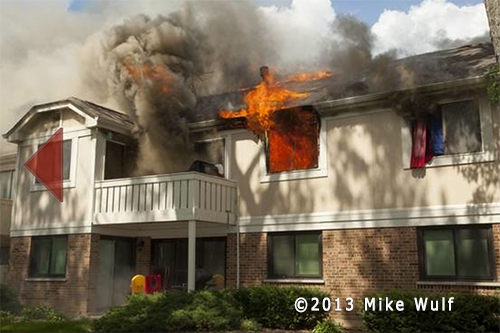The Daily Herald reports that the Schaumburg Fire Department had an apartment building fire yesterday afternoon. They received images and an early video showing heavy fire from the second floor and through the roof as submitted by Mike Wulf.

Fire in Schaumburg 7-16-13. Mike Wulf photo
Fire caused $600,000 damage Tuesday to a townhouse complex in Schaumburg.
Firefighters called to 392 Thornhill Court about 2:50 p.m. for a possible electrical fire in a second floor unit encountered heavy smoke and flames on the stairway as the entered. More than a dozen people had escaped safely and were outside when firefighters arrived.
The main fire in the apartment was extinguished in about 15 minutes, but it had spread to the attic and walls, according to Schaumburg Fire Capt. Frank Chambers. Crews stayed another few hours to ensure it was completely out, Chambers said.
thanks Steve





























